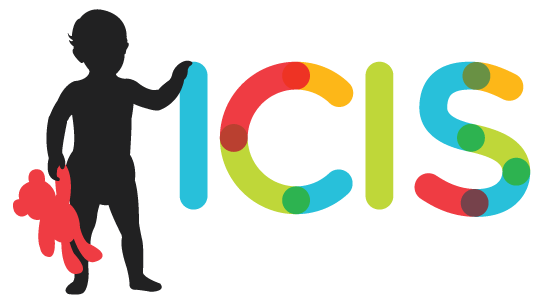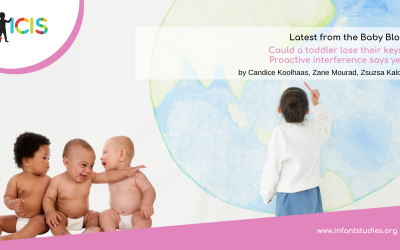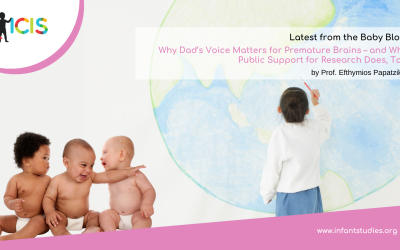Parent-child interactions that matter for early language development range from simple exchanges at the dinner table to conversations during play and book reading at bedtime. Each moment is a valuable opportunity for learning. Research highlights three key aspects of these interactions: how much parents talk to their child (quantity of parental speech), how diverse and complex their talk is (quality of parental speech), and how sensitive and responsive they are to their child (quality of parent-child interaction).
Quantity and Quality of Parental Speech
The seminal work of Hart and Risley (1995) brought attention to the striking differences in parents’ quantity of speech and children’s vocabulary based on socioeconomic status (SES) in the first four years of life, known as the “30-million-word gap.” This finding sparked extensive research examining the positive relation between the amount of language children hear—often measured as the number of words spoken to them—and their language skills (Golinkoff et al., 2019; Rowe, 2012). While the quantity of parental speech is vital for early language development, the quality of speech—such as the use of diverse vocabulary and complex syntax—plays an even more significant role. A meta-analysis on 52 studies involving infants to kindergarteners revealed that the contribution of speech quality to early language development outweighs that of speech quantity (Anderson et al., 2021).
However, infants require a different type of language input compared to older children. As they begin to decipher sounds into words and produce their first babbles, infants prefer short, repetitive, and exaggerated language, known as the infant-directed speech (Byers-Heinlein et al., 2021). Imagine how you would greet a baby compared to your colleague. In contrast, toddlers and preschoolers who are already familiar with many words, benefit from more challenging input, such as longer sentences, varied vocabulary, and advanced grammar (Rowe & Snow, 2020). A study with low-income, African American fathers showed that the use of wh-questions (e.g., why, where, who, when) during play sessions at home positively related to toddlers’ vocabulary and reasoning skills (Rowe et al., 2017). Thus, it is essential for parents to tailor their language input to match the evolving skills of their young children.
Responsive Parent-Child Interactions
Parents’ language input does not exist in a vacuum. Early language learning is socially mediated. Research consistently shows that reciprocal interactions between parent and child are a strong predictor of children’s language skills (Tamis-LeMonda et al., 2001). This is often characterized by the responsiveness of parents, the emotional tone of the conversation, and the sustained turn-taking that fosters children’s active communication. A helpful metaphor is “serve and return,” much like playing tennis or ping pong. Coined by the Center for the Developing Child at Harvard University, this term captures the essence of responsive parent-child interactions where the child “serves” through looks, gestures, and babbles, and the parent “returns” by promptly attuning to the child’s attention and providing a positive and appropriate response (Shonkoff & Bales, 2011). For instance, if a child looks at the ball, a parent might say, “That’s a ball. You want to play ball?” while rolling the ball to the child. Conversely, a parent might ignore the child’s look or redirect attention by offering another toy. Numerous studies have demonstrated the positive influence of responsive parent-child interactions on early language learning (Gros-Louis et al., 2014; McGillion et al., 2013). These interactions not only introduce children to new words but also teach them the proper ways of communication. Furthermore, a study with low-income families indicates that the quality of mother-child interactions is a considerably more robust predictor of children’s later language ability than the quantity of maternal speech (Hirsh-Pasek et al., 2015). Therefore, parents should strive for meaningful and supportive interactions with their children, as these are more conducive to language learning than merely increasing the volume of words spoken at home.
Considerations for Socioeconomic, Cultural, and Language Diversity
Although the field increasingly advocates for contextualizing children’s learning experiences and development, research on parent-child interactions primarily includes more advantaged families, typically White, middle-SES, and English-speaking. A major goal of my research agenda is to understand the variability of these interactions and their impact on early language development across families from diverse backgrounds. In a study involving predominantly low-income Latino families, my colleagues and I showed that both mothers and fathers “returned” their infants’ “serves” promptly within a similar timeframe as found with White, middle-SES parents, but few of their “returns” aligned with their infants’ focus. Despite this, these responsive interactions predicted infants’ language skills at 18 and 24 months, even after accounting for both parents’ quantity of speech (Chen et al., 2023). In another study, we found that low-income Latino mothers and fathers read to their infants weekly during the first year and that the frequency of these reading sessions positively related to infants’ language skills later on (Chen et al., 2024). These findings underscore the importance of encouraging all parents, regardless of socioeconomic or ethnic background, to engage in supportive and nurturing interactions with their children.
However, activities commonly emphasized in Western contexts, such as one-on-one play sessions and book reading, do not capture the full spectrum of children’s experiences. In some cultures, direct communication between parents and young children is less common, with children primarily learning through overheard conversations among adults or interactions with older siblings (Sperry et al., 2019). In African American and Hispanic communities, storytelling is a prevalent form of interaction, with parents sharing elaborate narratives filled with pride and love of family history and cultural heritage (Gardner-Neblett & Iruka, 2015). These rich language experiences are important sources of learning and should not be overlooked. Moreover, in many ethnically and racially diverse families, children hear two or more languages at home, and their interactions with parents in bilingual or multilingual contexts play a significant role in shaping their dual language development (De Houwer, 2015; Hoff, 2018). Understanding the multiple layers of diversity in parent-child interactions is crucial for appreciating the different ways through which early language development is supported.
Key Takeaways
Language development in early childhood is profoundly influenced by daily interactions with parents. Recognizing and valuing the diversity in these interactions is vital for supporting all children in reaching their full potential. For parents and caregivers, here are the key takeaways:
- Frequently talk and interact with your child during everyday activities like meals, playtime, reading, and chores.
- Incorporate a diverse vocabulary and challenging sentences when speaking to toddlers and preschoolers to help advance their language skills.
- Practice “serve and return” interactions with your child to enhance their social and communication skills.
- Share stories, songs, and traditions from your culture with your child.
- If your household is bilingual or multilingual, speak to your child in whatever language you feel comfortable with and do not mind switching back and forth.
References
Anderson, N. J., Graham, S. A., Prime, H., Jenkins, J. M., & Madigan, S. (2021). Linking Quality and Quantity of Parental Linguistic Input to Child Language Skills: A Meta‐Analysis. Child Development, 92(2), 484–501. https://doi.org/10.1111/cdev.13508
Byers-Heinlein, K., Tsui, A. S. M., Bergmann, C., Black, A. K., Brown, A., Carbajal, M. J., Durrant, S., Fennell, C. T., Fiévet, A.-C., Frank, M. C., Gampe, A., Gervain, J., Gonzalez-Gomez, N., Hamlin, J. K., Havron, N., Hernik, M., Kerr, S., Killam, H., Klassen, K., … Wermelinger, S. (2021). A multi-lab study of bilingual infants: Exploring the preference for infant-directed speech. Advances in Methods and Practices in Psychological Science, 4(1), 10.1177/2515245920974622. https://doi.org/10.1177/2515245920974622
Chen, Y., Cabrera, N. J., & Reich, S. M. (2023). Mother-child and father-child “serve and return” interactions at 9 months: Associations with children’s language skills at 18 and 24 months. Infant Behavior and Development, 73, 101894. https://doi.org/10.1016/j.infbeh.2023.101894
Chen, Y., Cabrera, N., Sudduth, C., & Reich, S. M. (2024). Contributions of mothers’ and fathers’ shared book reading with infants at 9 months to language skills at 18 months in ethnically and socioeconomically diverse families. Infant and Child Development, n/a(n/a), e2516. https://doi.org/10.1002/icd.2516
De Houwer, A. (2015). Harmonious bilingual development: Young families’ well-being in language contact situations. International Journal of Bilingualism, 19(2), 169–184. https://doi.org/10.1177/1367006913489202
Gardner-Neblett, N., & Iruka, I. U. (2015). Oral narrative skills: Explaining the language-emergent literacy link by race/ethnicity and SES. Developmental Psychology, 51(7), 889–904. https://doi.org/10.1037/a0039274
Golinkoff, R. M., Hoff, E., Rowe, M. L., Tamis‐LeMonda, C. S., & Hirsh‐Pasek, K. (2019). Language Matters: Denying the Existence of the 30‐Million‐Word Gap Has Serious Consequences. Child Development, 90(3), 985–992. https://doi.org/10.1111/cdev.13128
Gros-Louis, J., West, M. J., & King, A. P. (2014). Maternal Responsiveness and the Development of Directed Vocalizing in Social Interactions. Infancy, 19(4), 385–408. https://doi.org/10.1111/infa.12054
Hart, B., & Risley, T. R. (1995). Meaningful differences in the everyday experience of young American children. Baltimore, MD: Paul H Brookes.
Hirsh-Pasek, K., Adamson, L. B., Bakeman, R., Owen, M. T., Golinkoff, R. M., Pace, A., Yust, P. K. S., & Suma, K. (2015). The Contribution of Early Communication Quality to Low-Income Children’s Language Success. Psychological Science, 26(7), 1071–1083. https://doi.org/10.1177/0956797615581493
Hoff, E. (2018). Bilingual Development in Children of Immigrant Families. Child Development Perspectives, 12(2), 80–86. https://doi.org/10.1111/cdep.12262
McGillion, M. L., Herbert, J. S., Pine, J. M., Keren-Portnoy, T., Vihman, M. M., & Matthews, D. E. (2013). Supporting Early Vocabulary Development: What Sort of Responsiveness Matters? IEEE Transactions on Autonomous Mental Development, 5(3), 240–248. https://doi.org/10.1109/TAMD.2013.2275949
Rowe, M. L. (2012). A Longitudinal Investigation of the Role of Quantity and Quality of Child-Directed Speech in Vocabulary Development. Child Development, 83(5), 1762–1774. https://doi.org/10.1111/j.1467-8624.2012.01805.x
Rowe, M. L., Leech, K. A., & Cabrera, N. (2017). Going Beyond Input Quantity: Wh -Questions Matter for Toddlers’ Language and Cognitive Development. Cognitive Science, 41, 162–179. https://doi.org/10.1111/cogs.12349
Rowe, M. L., & Snow, C. E. (2020). Analyzing input quality along three dimensions: Interactive, linguistic, and conceptual. Journal of Child Language, 47(1), 5–21. https://doi.org/10.1017/S0305000919000655
Shonkoff, J. P., & Bales, S. N. (2011). Science Does Not Speak for Itself: Translating Child Development Research for the Public and Its Policymakers: Translating Research for Policymakers. Child Development, 82(1), 17–32. https://doi.org/10.1111/j.1467-8624.2010.01538.x
Sperry, D. E., Sperry, L. L., & Miller, P. J. (2019). Reexamining the Verbal Environments of Children From Different Socioeconomic Backgrounds. Child Development, 90(4), 1303–1318. https://doi.org/10.1111/cdev.13072
Tamis-LeMonda, C. S., Bornstein, M. H., & Baumwell, L. (2001). Maternal Responsiveness and Children’s Achievement of Language Milestones. Child Development, 72(3), 748–767. https://doi.org/10.1111/1467-8624.00313
About the Author

Yu (Tina) Chen, PhD
NYU Grossman School of Medicine
Dr. Yu (Tina) Chen is a postdoctoral fellow and part of the PlayReadVIP research team, formerly known as the Video Interaction Project, at the Department of Pediatrics at NYU Grossman School of Medicine. She received her PhD in Human Development from the University of Maryland-College Park. Dr. Chen’s research examines the mechanisms through which early ecological contexts, including home and built environments, impact children’s development and their implications for policy and intervention. She is particularly interested in understanding risk and resilience in families from under-resourced and minoritized backgrounds, as well as the factors that promote healthy developmental trajectories in children from these families.




